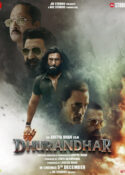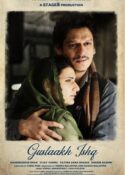 “Audiences who are unfamiliar with the codes and convention of Hindi cinema often find it difficult to make sense of song and dance sequences that, they believe, are inserted rather arbitrarily into a film’s narrative. Even among audiences who are avid fans of the so-called Bollywood style of filmmaking, there is a great debate on whether song and dance sequences are unique assets or great detriments to the further growth of Indian cinema.”
“Audiences who are unfamiliar with the codes and convention of Hindi cinema often find it difficult to make sense of song and dance sequences that, they believe, are inserted rather arbitrarily into a film’s narrative. Even among audiences who are avid fans of the so-called Bollywood style of filmmaking, there is a great debate on whether song and dance sequences are unique assets or great detriments to the further growth of Indian cinema.”
— Shanti Kumar, “The Transnational Economy of Film Production in Rajmoli Film City, Hyderabad” in Global Bollywood: Travels of Hindi Song and Dance.
I once read what may be an apocryphal story (I’ve not been able to find a reference to it to include here) that once, the BBC, in an effort to facilitate their programming, decided to shorten the classic film Amar, Akbar, Anthony by editing out the songs, resulting in a slew of phone calls from people complaining that the movie made absolutely no sense. Apocryphal it may be, but it illustrates an essential point: in the vast majority of cases, song and dance in Indian movies serves the narrative in important ways.
Shanti Kumar (in the above quoted article) cites screenwriter Anjum Rajabali, who identified eight key ways that song and dance make important contributions to the narrative of films. These include such things as introducing us to characters; conveying love at first sight; underscoring agony/ecstasy and prolonging it for dramatic effect; giving viewers a break from all that drama-rama before plunging them back into the story; providing parallel narratives; allowing characters to express emotions that would sound silly, contrived or awkward in dialogue; marking the passage of time; serving as punctuation and allowing for smooth transitions and changes in the story.
Kumar quite rightly points out that it would be rare to see songs illustrating all of these points in one film, but many of them can be found in quite a lot of films. Kumar uses David Dhawan’s 1998 film Bade Miyan, Chote Miyan (starring Govinda and Amitabh Bachchan) to illustrate how this works. I got thinking, why not see how it plays out in Imtiaz Ali’s Jab We Met?
1. “Aao Milo Chalo”
By the time the first song appears in the film, we’ve met our two protagonists, Geet and Aditya, and we know a little bit about them. The film prior to this song has been marked by sequences of running to catch the train, racing in a taxi to catch a train, and missing the train not once, but twice. Geet insists Aditya will now accompany her home, and they end up finally boarding a bus. Aditya starts to sing:
“Aao Milo Chalo” serves several purposes in the narrative at this point: first and foremost, it condenses the journey they take into the space of a song, allowing for a quick transition in which, well, a lot of ground is covered. It also provides a welcome relief from the rhythm of the film, which up to now has been punctuated with mostly fast-paced, high energy sequences and a few short stops — this song sequence slows the pacing down considerably and allows us a break from all the fast movement and quick transitions that characterize the film’s rhythm up to this point.
The lyrics, too, provide us with a clue to the film’s essential theme: it’s not the destination, it’s the journey that counts, and in the case of Geet and Aditya, it’s a journey that will ultimately change both their lives in ways they couldn’t imagine when they both stepped out on the road together.
Finally, “Aao Milo Chalo” gives us one further insight into Aditya’s character. After the song finishes, Geet comments that he’s a good singer, and this is when Aditya reveals to her his passion for music, and why he found it pointless to pursue that dream. Could that have been illustrated without the song? Maybe, but the song does it effortlessly, and allows Geet to easily raise the subject without preamble or a lot of dialogue to get there.








